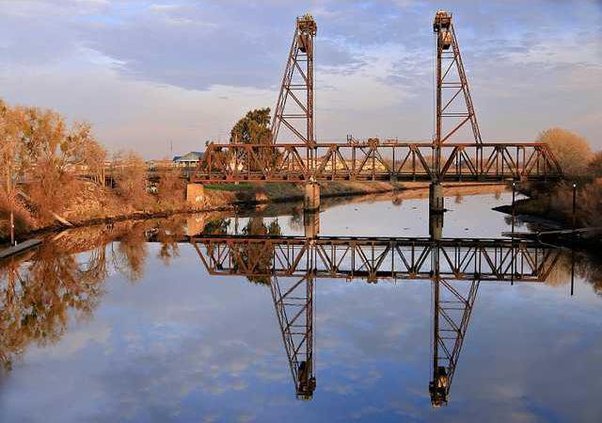The final link in the transcontinental railroad was not at the much-celebrated meeting of the Union Pacific and Central Pacific on May 10, 1869 at Promontory, Utah.
It was at Mossdale Crossing on the San Joaquin River.
The site was near where the Interstate 5 bridge crossing is today in Lathrop.
Building simultaneously started from the Bay Area and Sacramento and met at the San Joaquin River. The first train crossed the bridge on Sept. 8, 1869.
For several months in 1869, a passenger would board a train in New York City and travel west until they reached Mossdale. At that point, they would unload their luggage, cross the river by ferry, and board another train on the other side of the river before the trestle was completed.
The site is also celebrated for the arrival of the first sail launch at that point of the river — The Comet — in 1846.
The sail launch carried 20 men who had arrived in Yerba Buena (now San Francisco) in the fall of 1846 as part of a contingent of 200 Mormon men under the leadership of Sam Brannan to form a West Coast colony.
William Stout led the sub-group of 20 men that left Yerba Buena for the San Joaquin Valley. They sailed up the river on the launch dubbed “Comet” and landed near what is now Mossdale Crossing. They continued up river to a point a mile and a half up the Stanislaus River from its confluence with the San Joaquin River south of Manteca. It is there that they established a colony in about the same location where Caswell State Park is today.
Game ranging from elk, bear, and geese was abundant. They built a central house and soon set about planting wheat and potatoes.
They had 80 acres cultivated and fenced by January of 1847.
Winter rain, though, soon ruined their outpost. On one day in January, the river rose eight feet. It then rose a foot per hour and ultimately overflowed its bank. The settlers reported the river as wide as three miles opposite of Corral Hollow.
In a matter of months, the settlement called New Hope was abandoned.
Mossdale was a popular fishing spot for the native Yokut Indians, who also used it as a fairly safe river crossing.
Mossdale got its name from William S. Moss — the fifth owner of a ferry that was established at the point on the river in November of 1848.
The original ferry charged $1 for a man on foot, $8 for a wagon, and $3 for a man and his horse.
Moss, after buying the ferry, returned east for his family. He originally came to California in 1856 via the Isthmus of Panama but on his second trip came overland with $500,000 in gold coin he raised after selling his East Coast property.
Moss went on to start the San Francisco Examiner that was later sold to George Hearst.
To contact Dennis Wyatt, e-mail dwyatt@mantecabulletin.com





